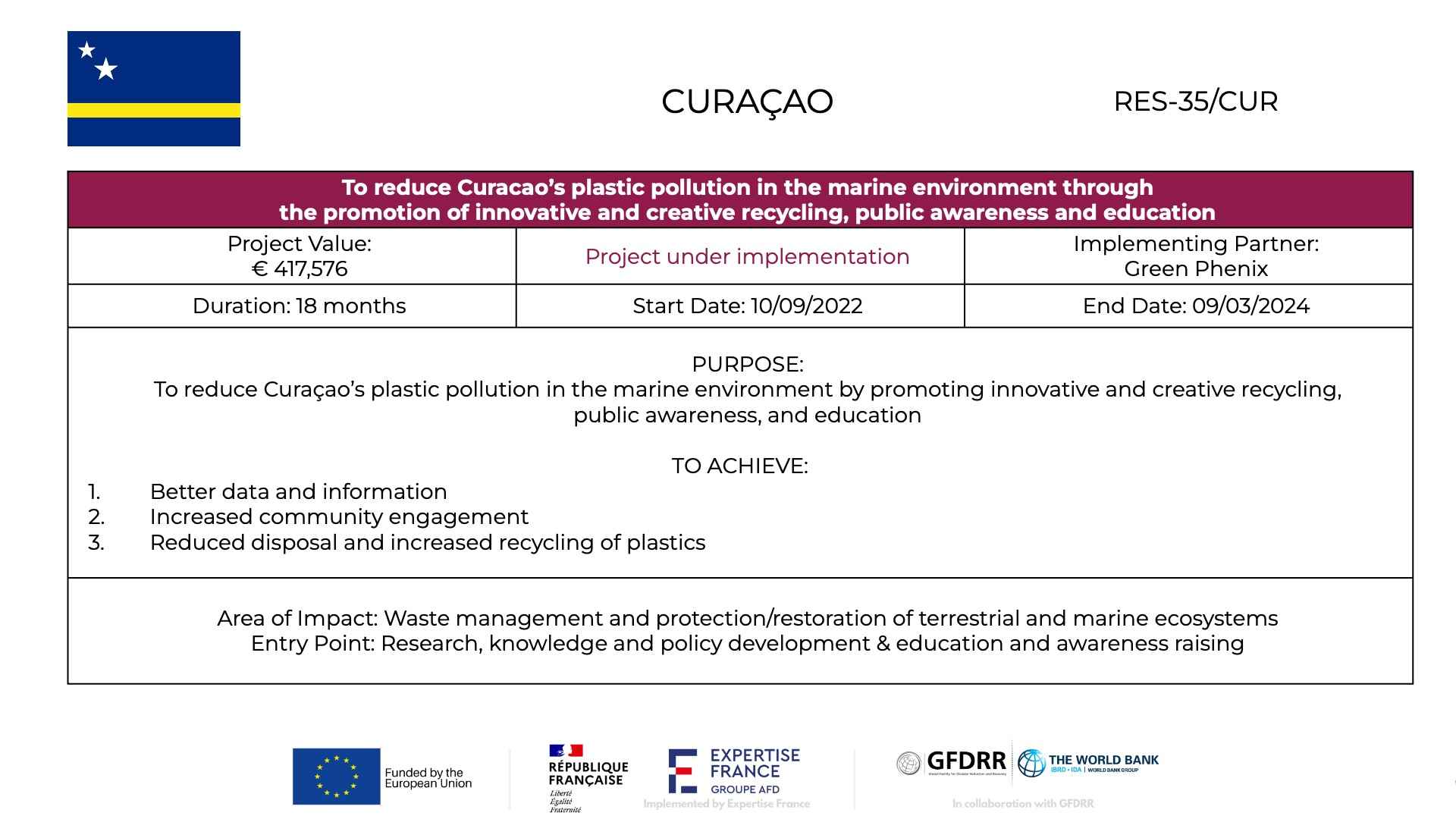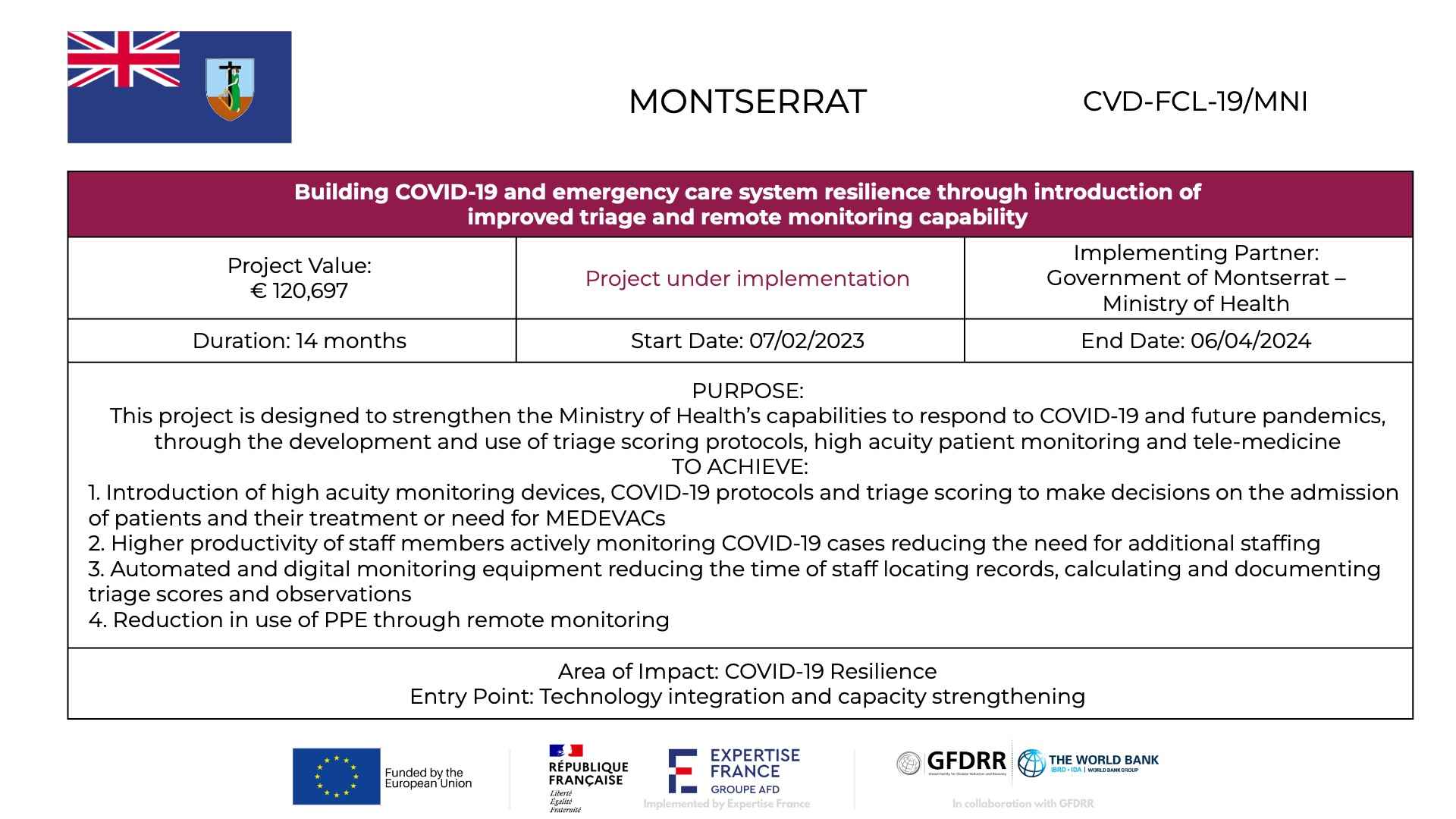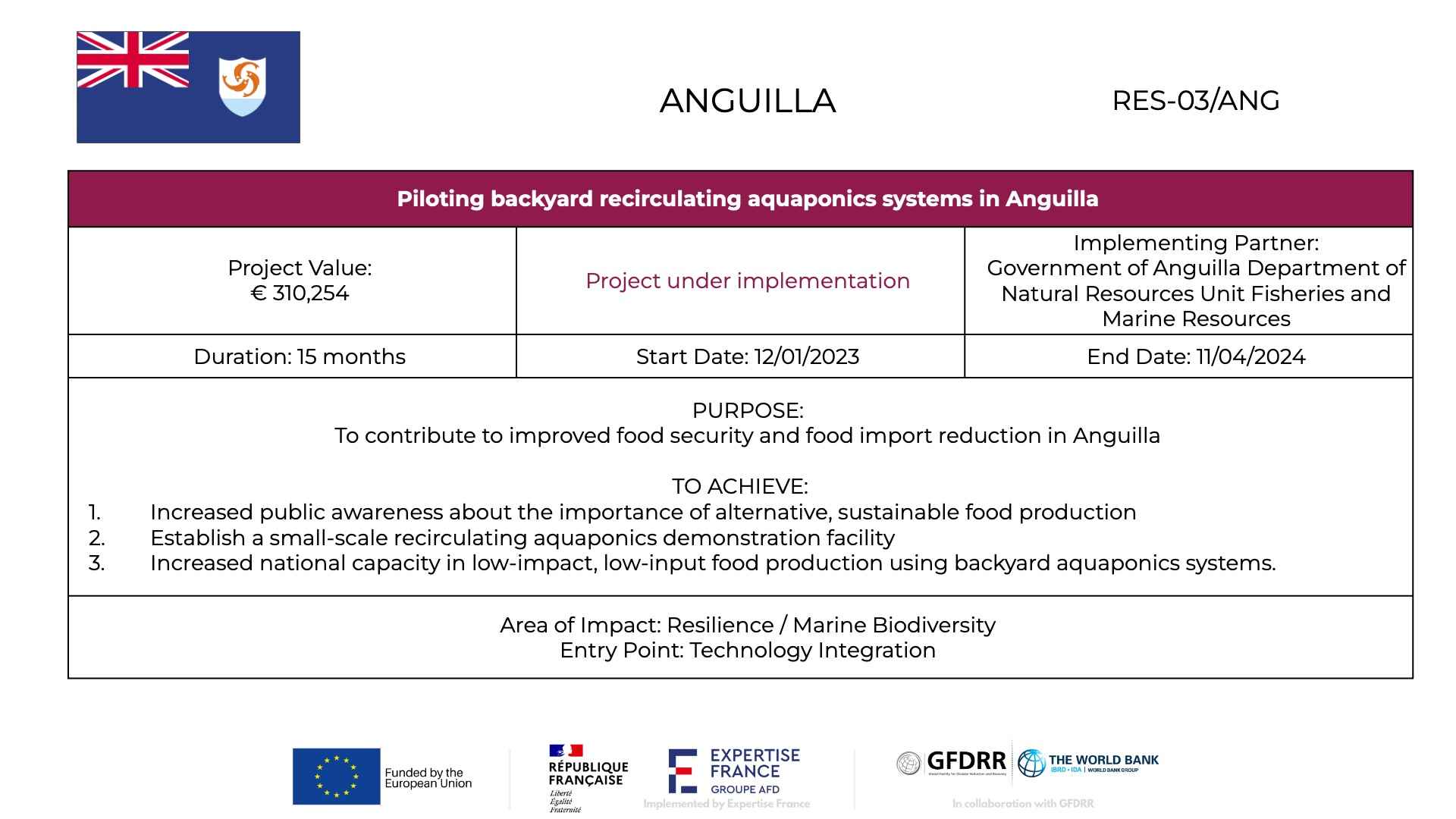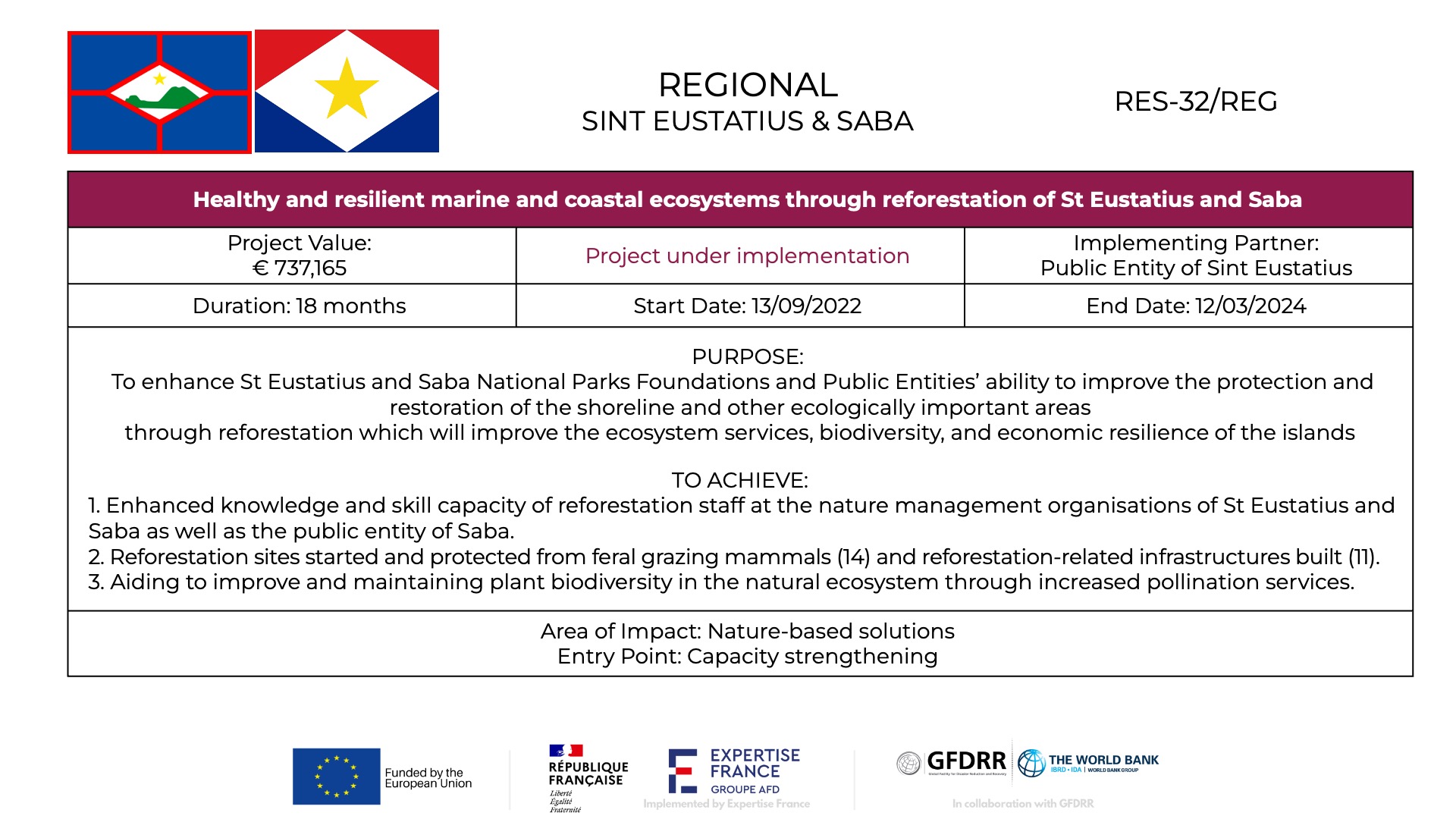Risks resulting from natural extreme events and climate change combined with vulnerable economies are among the biggest challenges facing the Caribbean OCTs. The geographic reality however is one that requires a very consistent and concerted effort at the widest regional and global level to effectively build resilience.
In 2017, Hurricanes Irma and Maria struck Anguilla, British Virgin Islands, Saint Barthélemy, Sint Maarten and the Turks and Caicos Islands, as well as Saba, St. Eustatius and Montserrat. Responding to the widespread destruction demanded serious attention to developing policies that on one hand ensured that the OCTs rebuilt more robustly, while on the other ensured the shortest possible rebound time for local economies.
The Caribbean region is subject to recurrent natural extreme events, such as hurricanes, floods, earthquakes, volcanic eruptions, landslides, and droughts. As highlighted above, the 2017 hurricane season was particularly active, with severe damage in seven OCTs. Atlantic hurricanes derive their power from the heat created by warm tropical waters – a phenomenon that is likely to be exacerbated by climate change and global warming, thus making them more frequent and intense.
The capacity to cope with the effects of major natural extreme events is limited for most OCTs – this is primarily due to their small and vulnerable economic bases. In this regard, there is a need to reduce structural vulnerability and increase the resilience of economic infrastructure and fragile coastal ecosystems to extreme recurrent natural events.
The 2012 Commission Communication on the European Union’s approach to resilience defines resilience as “the ability of an individual, a household, a community, a country or a region to withstand, adapt and quickly recover from stresses and shocks”. Support to resilience at all levels is also an integral part of the new 2017 European Consensus on Development.













The Covid-19 pandemic is one of epic proportions, affecting all countries to a varying degree, some severely, but all without exception. This crisis may have begun as a public health emergency but already has become, for every country in the world, a crisis of societal resilience, whose shock ripples across every single sector of society and area of economic activity, and whose repercussions will be far reaching and long lasting.
The Overseas Countries and Territories (OCTs) of the Caribbean, most of which are highly vulnerable to shocks and stresses in the global economy, have experienced many of the negative repercussions. Contributing factors have been the share of tourism as a share of the GDP and remittances which underpin the lives of many throughout the region. The loss of income has pushed many vulnerable households to rely on social welfare and food assistance.
The pandemic has exacerbated the exposure of the countries and territories to public health risks and vulnerability to extreme events. In recent years, the islands have suffered the brunt of multiple hurricanes (e.g. Irma and Maria in 2017), as well as dengue and Chikungunya outbreaks, and Zika virus since 2015. The current public health crisis has truly spoken to the essence of the resilience of the nations, and the overall limited preparedness to deal with these different threats. Fortunately, models of leadership and cooperation between the islands have emerged. Noteworthy, are the solidarity and resourcefulness of the people, which stand as a formidable reflection of the resilience of these diverse islands.
As the OCTs have mounted their own responses to the pandemic, several weaknesses have become ever more apparent. Like most countries in the world, including some of the wealthiest and best organised, OCTs had no plans in place for such a scenario. The public health care systems are ill-equipped to face the demand for basic primary and secondary healthcare, let alone an epidemic of historical and global proportions.
Lack of information and inconsistencies in risk communication may also have led to hampering the response in some instances. The public health systems of the OCTs today are under enormous pressure and in dire and urgent need of human, technical and financial assistance. From the outset, it was critical to harness all possible resources to mount the beginning of a response.
In this context, the RESEMBID programme had a distinct advantage: the programme’s strategic mandate to assist the OCTs to strengthen their resilience on a broad front; the existing close collaboration with key stakeholders at the regional and country levels; and a fully operational team in place on the ground on Sint Maarten. Following international recognition of the gravity of the pandemic, in late March 2020 the RESEMBID team took the initiative of conceptualising, structuring, and building consensus on the establishment, in the space of ten days, a fast-track, flexible project financing mechanism. Thanks to the responsiveness, sense of urgency and empathy of the European Union Delegation, and the flexibility of Expertise France, RESEMBID was able to announce on 5th April 2020 the Covid-19 Resilience Response Facility, with €10 million to be deployed across the 12 participating Caribbean OCTs.
Funds available under the RESEMBID COVID-19 Resilience Response Facility are deployed as direct grants under a fast-track expedited procedure. This exceptional procedure has been authorised to maximise the speed and flexibility of the Facility to support OCT needs specifically in the context of the COVID-19 crisis. The Facility promotes a demand-driven, bottom-up approach, identifying initiatives and actions in line with OCT priorities and needs.
The full extent of the impact of the COVID-19 pandemic at the regional, national and community level is still uncharted and the RESEMBID programme is committed to safeguarding and reinforcing resilience at all strata. Funds can be used for:
- Strengthening of institutional capacity to respond to the COVID-19 pandemic
- Provision of technical support to primary institutional stakeholders and frontline entities
- Staff training and the deployment of response teams
- Technical assistance for pandemic response strategy and policy development
- Equipment and supplies specifically related to COVID-19 crisis response needs
- Public education and community mobilisation programmes.
Although pandemic responses and readiness actions may have some inherent public health emergency specificities, they also present challenges and opportunities for countries and communities similar to those following extreme events. The responses generated by the countries, communities and economic sectors will have defining impacts on the future of the islands. Efforts to mainstream resilience in all aspects of planning will greatly determine future socio-economic outcomes. This principle is at the very heart of the “DNA” of the RESEMBID Programme.
Our Partners


